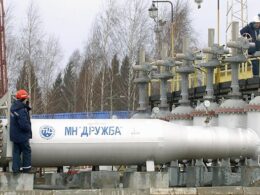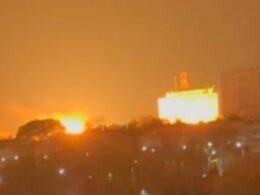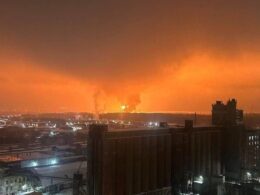In the past 24 hours, Ukraine was hit with many drones and missiles, but it also dished them out — striking a strategic chemical factory, a power plant, and other targets inside Russia.
According to the General Staff of the Armed Forces, a combined strike that included British-made Storm Shadow cruise missiles hit the Bryansk Chemical Plant about 125 kilometers north of Ukraine’s border on 21 October. This plant, which sits a few kilometers outside Bryansk, produces gunpowder, explosives, and rocket fuel components used in Russian munitions.
Ukraine's Unmanned Systems Forces Commander Robert "Madyar" Brovdi confirmed the plant's strategic importance, calling it "perhaps the largest frontline industrial production and repair base for heavy weapons that the Russian army uses today on the battlefield."

"This is a powerful blow to Russian combat capability on the battlefield, here and now," Madyar wrote, detailing that the facility produced ammunition and conducted repairs for artillery, TOS-1A thermobaric systems, all types of MLRS (Grad, Uragan, Tornado), engineering munitions, and Kh-59 cruise missiles.
The attack is part of Kyiv’s growing effort on hitting strategic targets inside Russia, focusing especially on oil refineries and factories producing war materiel. President Volodymyr Zelenskyy recently claimed that these attacks are happening just about daily.
In most cases, Ukraine uses a menagerie of different attack drones to hit these objectives, but has frequently added in missiles as well.
“The Defence Forces of Ukraine continue to strike strategic facilities of the military-industrial complex on the territory of the Russian Federation, thereby weakening the offensive potential of the aggressor state,” the General Staff wrote in a statement on the 21 October attack.
The Ukrainian forces said they are assessing the damage, without providing additional details. The Air Force, Land Forces, and Navy were involved in the attack, per the statement.
Russian media reported taking down the missiles and claimed to destroy 57 Ukrainian drones during the attack, while social media from the region posted videos of incoming weapons and reported the sounds of explosions around the industrial zone.
Power outages in some Russian neighborhoods reported
On the same day, power reportedly went out in Trubchevsk, a town just north of the Ukrainian border in Bryansk Oblast, with one Russian Telegram channel posting a video of what appears to be a burning substation purportedly located in the area.
Russian social media channels also reported that a fire broke out in the Russian city of Smolensk, 270 kilometers north of Ukraine’s border following a drone alert, possibly signaling more Ukrainian air activity in that area. Parts of the city reportedly lost power.
The Ukrainian General Staff did not comment on what happened to these energy infrastructure assets. Local Russian officials remained silent about the attacks.
The Bryansk Chemical Plant has been hit in the past. One strike took place in January, with some Russian sources claiming that US-made ATACMS missiles were used during the attack. An ammunition depot in the area was also reportedly struck.
More recently, Ukraine's General Staff reported that it used Neptune cruise missiles to attack the Elektrodetal plant in Bryansk Oblast. This plant produces electrical connectors for both military and industrial applications.
Ukraine wants more missiles for its deep strike campaign
The UK provided the air-launched Storm Shadows, with a range of over 500 kilometers in 2023. Ukrainian forces swiftly starting to use them in combined attacks against targets in Russia and occupied Crimea.
Ukraine is trying to ramp up its deep strike campaign in an attempt to cripple Russia economically and hinder its military production to freeze its creeping advance along the front. As part of this, it is trying to secure long-range missiles from allies and build some of its own.
Brigham McCown, a senior fellow at the Hudson Institute, said Ukraine likely needs "hundreds" of missiles.
Kyiv has lobbied the United States to provide Tomahawks, a cruise missile with a range of about 2,400 kilometers. The administration of US President Donald Trump appeared to show signs that it was considering it, but has so far rebuffed this request.
Ukraine also appears to be combat-testing its own Flamingo range of cruise missiles, which were just announced in August, with a recent attack against Russian targets in Crimea.
While the Flamingo's developer, Fire Point, claimed that it could produce one missile per day and ramp that up sevenfold in the future, it is unclear what quantities will be available to the Ukrainian forces and how quickly.





